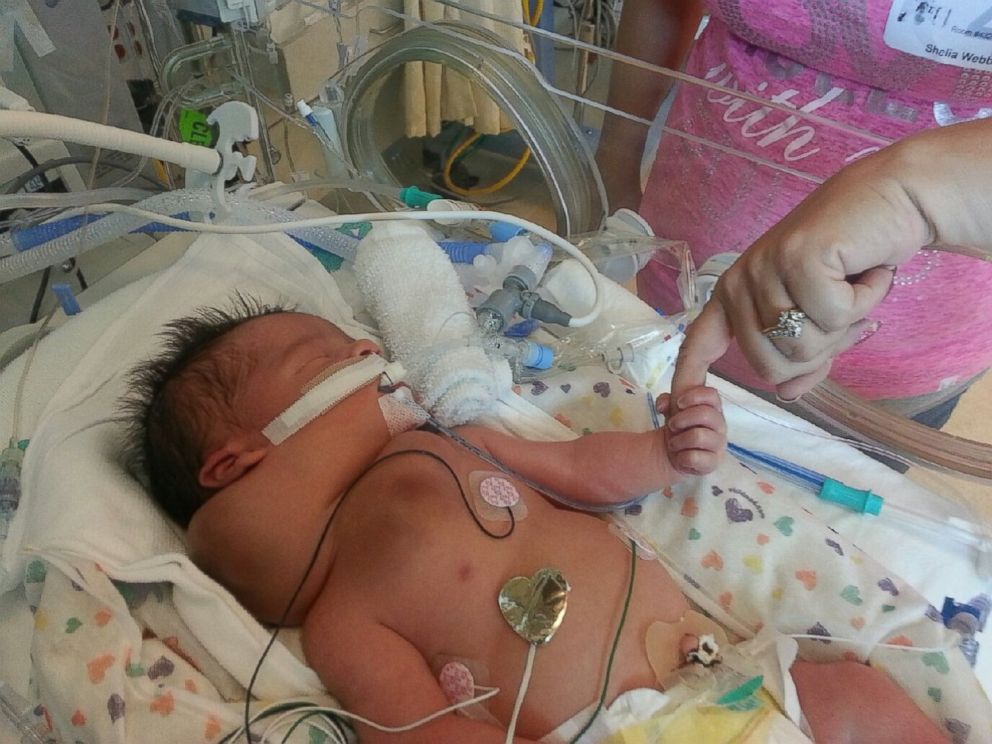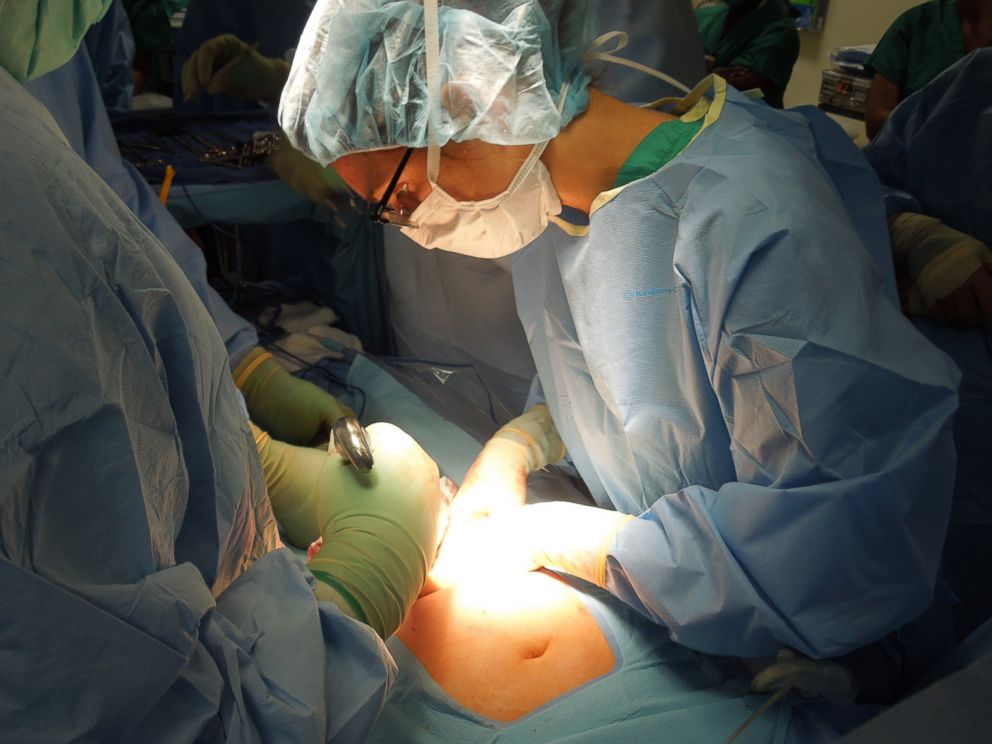Boy Thriving After Surgery in Womb
Blake Sanchez had tumors on his neck and chest.
May 23, 2014— -- At 21 months, Blake Sanchez looks like any other toddler except for a very small amount of excess skin on the bottom of his face. His mother Britnie Sanchez said she still can’t believe that this small marker is all that’s left of a life-threatening ordeal that started before Blake was even born.
When Sanchez was 34 weeks pregnant with Blake, doctors discovered that he had large tumors pressing on his neck and chest.
“They said it was like airplane pillows but cut in half and then under his arm. They only knew it was a mass,” Sanchez told ABC News.
The tumors were potentially blocking off the airway passages for Blake. When he was in the womb, Blake was protected as all of his blood was oxygenated through his umbilical cord. However, once he was delivered Blake would likely be unable to breathe on his own.
To save Blake, doctors could perform a rare surgery during the delivery called the EXIT procedure. Standing for Ex-Utero Intrapartum Treatment , the EXIT procedure involves performing surgery on the infant when they are out of the uterus but before the umbilical cord has been clamped.
“I couldn’t stop crying,” Sanchez said of receiving the news. “I would just sit in our nursery and cry….I knew when he was in me, he was safe.”
Dr. Esther Friedrich, a perinatologist at the Kaiser Permanente Los Angeles Medical Center, treated Sanchez and told ABC News affiliate KABC-TV there were serious risks involved in the surgery.
“When you look at the literature in every single case, the mortality is high,” said Friedrich.
To cut down the risks and prepare for the surgery, more than 40 medical personnel used two operating rooms to practice the procedure.

Sanchez said she spent the weeks leading up to the surgery in “depressed mode,” but eventually was calmed after talking to Frederich just before the surgery started.
“You’re going to wake up to beautiful baby boy. Don’t be sad, this is a not a day to be sad. This is a day to be happy,” Sanchez recalled Frederich telling her as she entered the operating room.
Once Sanchez was under anesthesia, doctors had to figure out how to keep Sanchez’s body from going into delivery mode, which could compromise Blake's health if doctors had not established an airway. To “trick” her body, doctors flushed warm saline solution into her uterus so that they had time to attend to Blake before clamping the umbilical cord.
Frederich said doctors partially delivered Blake, gave him a sedative and then intubated him to establish an airway in about 15 minutes. Then then delivered Blake and cut the umbilical cord before whisking him to the neonatal intensive care unit.
“All I remember [after the surgery] is seeing my husband and asking if my baby was here,” Sanchez said. “[He said] he’s here and he’s beautiful and he’s doing great.”

Although doctors were able to establish an airway, Blake wasn’t completely out of the woods yet. The large tumors were not cancerous, but they were filled with fluid that could not be easily drained and were pressing on Blake’s lungs.
It took nearly three months before doctors were able to try an experimental medication that diminished tumors. Sanchez and her husband Chris Sanchez, weren’t even able to hold their son until he was 2 months old.
At three months, the Sanchez family were finally able to take Blake home, although the infant had a tracheotomy tube that required he be on a ventilator at all times.
Earlier this month, the Sanchez family reunited with some of the doctors and nurses that helped deliver and treat Blake as a newborn. Frederich said that seeing Blake recovery was remarkable knowing how extensive his tumors were at birth.
“You totally wouldn’t be able to tell if you saw him,” she said, adding that Blake stole the show at the reunion. “Seeing him growthrough that whole procedure and treatment afterwards… It’s awesome. It really exemplifies why we’re doing this.”




